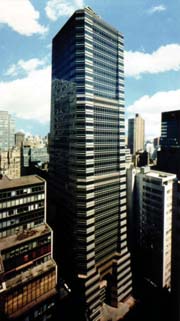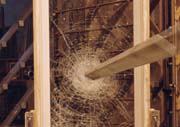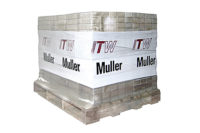
As you scan the skylines of today's cities, the effects of a little-known hero are everywhere. Modern buildings with huge expanses of glass reflect the blue sky and clouds above while offering a sense of openness in a once-oppressive concrete jungle. While the lion is the recognized king of the jungle, adhesives and sealants are the unsung heroes of modern metropolitan architecture.

One of the first adhesive technologies used in structural window glazing is silicone; structural silicone glazing systems (SSGs) have a 30+ year track record of success. Today, the world's tallest buildings use this technique based on the performance and durability demonstrated over the past few decades. A key requirement for SSG is long-term adhesion durability to glass under the temperature extremes and movements found on the exterior of a commercial building. SSGs deliver a continuous rubber anchorage that allows an uninterrupted glass façade. The silicone allows for differential thermal expansion between substrates of differing thermal-expansion coefficients.
It is important to note that the industry standard specification for SSGs is ASTM C 1184 and the use guide is ASTM C 1401. Both are under the jurisdiction of ASTM Committee C-24 on Building Seals and Sealants. Current silicone technology demonstrates safety factors of 4-8 when designed according to ASTM C 1401 and tested according to ASTM C 1135. (There are no other engineered, manufactured building components with such high safety factors.)
A variety of technologies are now used in window glazing and weather sealing, such as silicones, polyurethane reactive adhesives, acrylics hot-melt urethanes, synthetic rubber membrane systems, and, more recently, tapes. These sealants bond glass to metal, stone, tile, ceramic, wood and composites.
Adhesives are the fastener of choice for glazing because they are aesthetically preferable, if not invisible. In addition, glazing adhesives provide sealing properties, lower labor costs, higher throughput rates and corrosion resistance, and they weigh less than old-fashioned mechanical fasteners. Structural window glazing adhesives also provide manufacturing benefits, including automation ability and compatibility with a variety of building materials.
To ensure reliable field performance, structural glazing adhesives must pass a rigid series of tests, including UV exposure, accelerated weathering, cyclic wind pressure-loading, structural performance, air infiltration, water resistance, and performance under wide temperature and humidity variations.
In terms of safety, glazing adhesives are flexible and absorb shock better than mechanical fixation systems. Rigid mechanical fasteners cause localized stress points that can distort and weaken the glass, and, in turn, the overall structure. Structural window glazing adhesives keep glass from contacting metal, and in the event of breakage due to vandalism, missile impact or severe seismic activity, the adhesive attachment will keep shards of glass from falling down the façade.

As a result of the devastation of Hurricane Andrew in 1992, stricter codes for both commercial and residential buildings were developed, such as the Metro Dade County Protocols PA201-94 and PA203-94. These stringent standards of performance mandate higher levels of impact resistance for windows. The combination of structural-glazing sealants and laminated window systems are proven to meet these new requirements (including withstanding winds up to 95 mph) and significantly reduce risks to the integrity of newly constructed buildings in hurricane-prone areas. Designed for impact resistance, these systems provide outstanding adhesion, tear strength, flexibility and wind and moisture resistance.
The heroic efforts of adhesives and sealants are stretching the limits of architectural creativity. Adhesives allow for curved glass structures that break conventional block construction boundaries. The future looks bright for adhesives as architectural design trends continue to feature open, irregular spaces and natural light.
AFI would like to acknowledge the following member companies who contributed to this development of this article: Dow Corning, National Starch and Sika.
For more information on the many benefits of adhesives and sealants, contact the Adhesive Fastening Institute (AFI) at http://www.ascouncil.org. The AFI's mission is to provide adhesive and sealant industry information and resources for designers, engineers, architects, and other end users engaged in structural and assembly markets. Our goal is to increase awareness and promote usage of adhesives and sealants as a preferred fastening method for modern product design and architecture.
